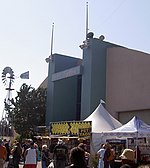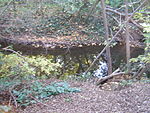South Park, Santa Rosa, California
Chicano and Mexican neighborhoods in CaliforniaNeighborhoods in Santa Rosa, California

South Park is residential neighborhood in the city of Santa Rosa, California. It is located in south Santa Rosa, east of U.S. Highway 101, south of Bennett Valley Road, west of the Sonoma County Fairgrounds, and encompasses 60 blocks. The community is known for its old houses and artistic murals in the area, and notorious for its history of an above average crime rate and gang activity. South Park was also once a settlement for African Americans during the mid-1900s and was a center of Santa Rosa's Black community. Today, the neighborhood is mainly Latino. It has around 1,500 residents.
Excerpt from the Wikipedia article South Park, Santa Rosa, California (License: CC BY-SA 3.0, Authors, Images).South Park, Santa Rosa, California
Pressley Street, Santa Rosa
Geographical coordinates (GPS) Address Nearby Places Show on map
Geographical coordinates (GPS)
| Latitude | Longitude |
|---|---|
| N 38.4284 ° | E -122.708 ° |
Address
Pressley Street 726
95404 Santa Rosa
California, United States
Open on Google Maps








